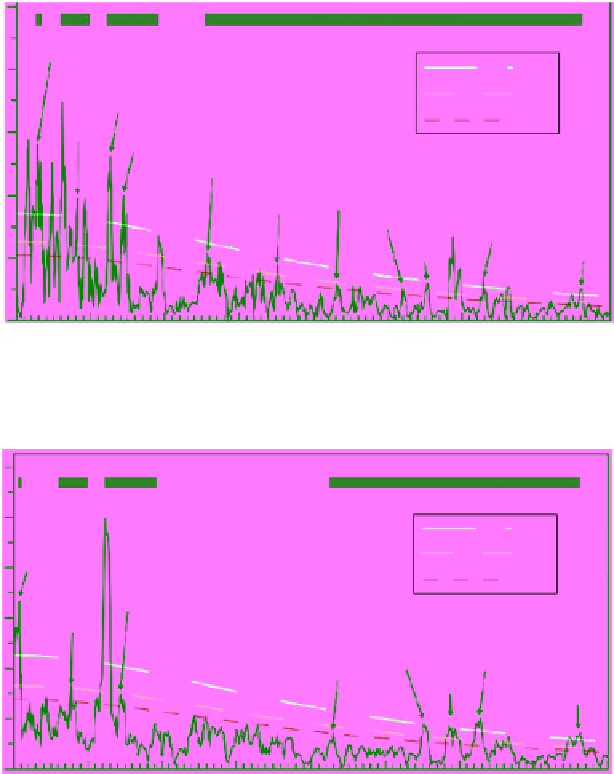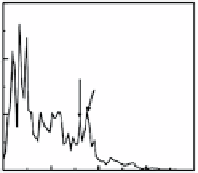Geology Reference
In-Depth Information
1
e
o
p
Sub-milankovith cycles
100ka
3.4 m
0.8
99%
95%
90%
45 ka
1.54 m
22.8 ka
0.78 m
36 ka
20 ka
0.6
1.24 m
0.69 m
11 ka
0.38 m
6.8 ka
8.2 ka
0.4
0.23 m
0.28 m
5.6 ka
5ka
0.19m
4.7 ka
0.17m
0.16m
3.8 ka
5.3 ka
0.13m
0.18m
0.2
0
0
1
2
3
4
5
6
7
8
Frequency (cycles/m)
(b)
120
E
OP
Sub-milankovith cycles
23 ka
0.8 m
100
99%
95%
90%
405 ka
13.6 m
80
20.5 ka
0.69 m
36 ka
60
1.24 m
5.3 ka
4.7ka
6.8 ka
0.18m
0.16m
0.23 m
5ka
40
3.8ka
0.17m
0.13m
20
0
0
1
2
3
Frequency (cycles/m)
4
5
6
7
8
Figure 6.10
(a) Spectral analysis of ARM (b) and MS data series from the Triassic Daye Formation carbonates. The
duration of the different cycles is based on assuming that the biostratigraphically identified Induan stage in the
Triassic was between 1 and 1.4 million years in duration. Note the identification of both astronomically forced cycles
and sub-Milankovitch cycles. Source: Wu et al. 2012. Reproduced with permission of Elsevier.
(a)
(b)
0.3
0.3
585
405
0.2
0.1
0
-0.1
0.2
124
114
170
0.1
-0.2
-0.3
0
0
200
400
600 800
100ka tuned-time (ka)
1000
1200
1400
1600
0
0.005 0.01
Frequency (1/ka)
0.015
0.02
Figure 6.11
AM (amplitude modulation) of the ARM series from the (a) Daye Formation showing that the
envelope (in red) of the precessional signal (obtained by Gaussian band-pass filtering) has an (b) MTM spectrum
showing cycles with periods of short and long eccentricity, showing that precession is modulated by eccentricity.
Source: Wu et al. 2012. Reproduced with permission of Elsevier.



